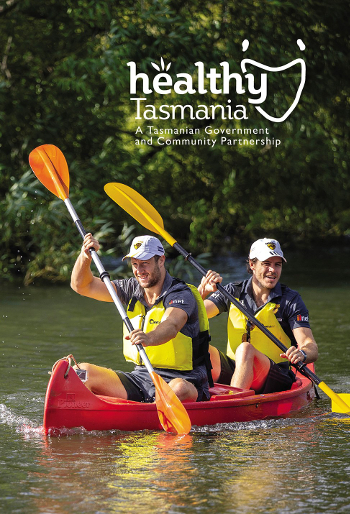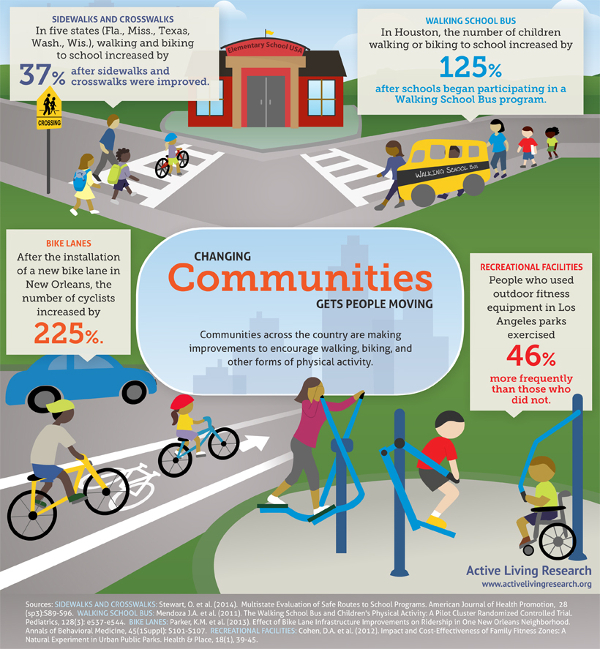Department of Health
A gateway to the strategies, policies, programs and services delivered by the Department of Health.
A Tasmanian Government and Community Partnership

Healthy Tasmania is the Government’s plan for making Tasmania the healthiest state by 2025. Focusing on four priority areas - reducing smoking, healthy eating and physical activity, community connections and chronic conditions screening and management – Healthy Tasmania involves a wide range of projects and initiatives to help Tasmanians make positive and healthy changes to their lives.
Congratulations to the 24 organisations awarded seed funding of up to $25 000 in the second round of Community Innovations Grants.
A total of $500 000 was available for community-led projects supporting reducing smoking, healthy eating or physical activity, and all with a focus on building community connections.
Projects range from a Tasty Tasmania YouTube channel to a Ninja Warrior course to incentivised programs for smoking cessation.
The successful applicants demonstrate innovation and strong, community-led partnerships to improve the health outcomes of their communities. We look forward to following their progress.
Read the full list of Round 2 grant recipients.
Image: Round 2 Community Innovations Grants recipients announced at Windsor Precinct parkrun
The 26 organisations who received seed funding in the first round of Community Innovations Grants have completed their projects. As well as reporting on their intended project outcomes, organisations have noted a range of unintended program effects, such as employment opportunities and recognition within the wider community.
We look forward to sharing the powerful stories unfolding from the grants and other Healthy Tasmania initiatives, and celebrating the projects shaping change.
Keep up to date via our Facebook page and Healthy Tasmania portal.
A new grant fund supporting community organisations to improve the health and wellbeing of their communities will launch soon with information sessions planned in June.
More information will be available on the Healthy Tasmania portal soon.

We have joined forces with the Hawks to help promote Healthy Tasmania messages about healthy eating, physical activity and community connections.
Our new partnership was announced in February as part of Hawthorn Football Club’s annual community camp in Launceston.
We recently gave away 20 Tasmanian General Admission memberships via our Facebook page. Stay tuned for more Hawks action…
Image: Hawks help promote Healthy Tasmania messages
We are working with the Tasmanian Parks and Wildlife Service on a series of events about the theme ‘Healthy Parks Healthy People’.
The program engages with targeted communities to promote the health benefits of visiting parks and reserves. Events held so far include nature play in the wilderness with children and families, and a day of physical activity – including guided walks and Bollywood dancing – for people from multicultural communities at Mt Field National Park.

Image: Dancing in the wilderness at Mt Field National Park (Tasmanian Parks and Wildlife Service)
Save the date – Healthy Tasmania will be hosting a Community Forum on 13 August 2019. The Forum will showcase Healthy Tasmania achievements and provide an opportunity to discuss and identify the challenges and opportunities faced by communities in achieving better health outcomes.
More information will be available soon.
Healthy Tasmania Neighbour Day Community Challenge
Healthy Tasmania teamed up with Relationships Australia to support Neighbour Day on 31 March and help beat loneliness.
The Healthy Tasmania Neighbour Day Community Challenge aligned with this year’s Neighbour Day theme of Loneliness – what neighbours can do to create connections.
Communities were invited to share their ideas for helping create connections and address social isolation in their towns or neighbourhoods.
Eleven communities have received a total of $23 000 to implement some great initiatives such as installing new play equipment, enhancing shared spaces and supporting access to local events.
Read the full list of the Healthy Tasmania Neighbour Day Community Challenge winners and their projects.
The Healthy Tasmania Chronic Conditions Working Group is partnering with the University of Tasmania and the Australian Prevention Partnership Centre on an action learning research project to improve the prevention and management of chronic conditions.
Funding has been provided to four Tasmanian communities to try out new ways of delivering anticipatory care to improve the health and wellbeing of their communities. The four Tasmanian communities involved are Ulverstone, Flinders Island, Northern Suburbs of Launceston and Clarence.
Supporting Community Health and Wellbeing
Healthy Tasmania has funded the Local Government Association of Tasmania to build the capacity of the local government sector to support health and wellbeing initiatives.
Progress to date includes supporting councils with developing their community health and wellbeing plans, providing resources to councils and establishing strategic partnerships with the Heart Foundation, Department of Education and University of Tasmania. The project is currently considering strategic directions and sustainability beyond its completion in June 2020.
The Antenatal Carbon Monoxide Monitoring Opt-Out Referral pilot project started at the southern Midwifery Group Practice on 1 July 2018.
A preliminary evaluation was completed in November with early results indicating positive buy-in from midwives and an increase in smoker engagement with cessation support.
A full evaluation will be completed when the project ends on 30 June 2019. The pilot is being conducted with a view to system changes and possible implementation by region or state-wide if successful.
Our Facebook fans have told us the biggest barriers to developing healthy habits are lack of time and the need for motivation.
The Healthy Tasmania Challenge helps motivate Tasmanians to get healthy through simple, achievable everyday activities around healthy eating, moving more, drinking water, sleeping and connecting with friends and family.
A challenge is posted each month on our Facebook page, with monthly and major prizes up for grabs.
Our last survey revealed that 90 per cent of respondents who participated in a challenge continued healthy behaviours after completion of the challenge. Keep an eye out for more insights.
The Healthy Kids Toolkit features simple and practical information about food, nutrition and physical activity, all in one place. Age groups covered include pregnancy, babies, early childhood, school-age children, and young people.
Has your workplace joined the free Ritualize Healthy Tasmanian Workplaces program?
Healthy Tasmanian Workplaces is a 12-month health and wellbeing program available for free to Tasmanian residents via their employer.
This year kicked off with the revamped Ritualize app and a new quest schedule to help you get healthy for life. The next Quest kicks off on 27 May.

Move Well Eat Well supports the healthy development of children and young people in Tasmania through its award program for early childhood services and primary schools.
Move Well Eat Well have updated their website to feature current research on healthy eating, physical activity and sedentary behaviour to support the mental health and wellbeing of students across the state. The Health Promoting Schools Framework now includes mental health and wellbeing.
The website also features some Tasmanian Bush Food Recipes to try out during NAIDOC Week (7-14 July). Move Well Eat Well has been working with tagari lia Child and Family Centre to promote the recipes.
We all know being active is important for our health, but in our modern world it is becoming more of a challenge, largely because our cities and communities aren’t designed in ways that encourage us to be active. For example, if footpaths are pram-friendly, people with young children are more likely to walk to the park than drive their cars.
Worldwide, one in five adults and four out of five adolescents (11-17 years) do not do enough physical activity.
Last November Public Health Services hosted Professor Sallis, a world-leading physical activity expert focusing on active living.
Active living is all about putting things in place which create healthier spaces. This could be bike lanes, seats and shelters at bus stops, more lighting to make people feel safe in parks or shops, and services located in walkable neighbourhoods.

image: Changing Communities Gets People Moving (Active Living Research). Text version of image provided below.
Communities across the country are making improvements to encourage walking, biking and other forms of physical activity.
In five states, (Florida, Mississippi, Texas, Washington., Wisconsin), walking and biking to school increased by 37% after sidewalks and crosswalks were improved.
In Houston, the number of children walking or biking to school increased by 125% after schools began participating in a Walking School Bus program.
After the installation of a new bike lane in New Orleans, the number of cyclists increased by 225%
People who used outdoor fitness equipment in Los Angeles parks exercised 46% more frequently than those who did not.